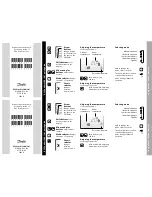
InteliATS
NT
PWR, SW version 2.5, ©ComAp
– May 2015
97
IA-NT- PWR-2.5-Reference Guide.pdf
Modbus protocol
The selection of the function of serial port is done via the setpoint
COMx Mode
in
Basic settings
57600 bps, 8 data bits, 1 stop bit, no parity
Transfer mode RTU
Function 3 (Read Multiply Registers)
Function 6 (Write Single Register)
Function 16 (Write Multiply Registers)
The response to an incoming message is sent with minimum 4.096 ms delay after message
reception
The complete description of Modbus communication protocol can be found in
Modbus Protocol
Reference Guide PI-MBUS-300
and
Open Modbus Specification Release 1.0
. Both documents are
available on the web.
Communication object vs. Register
All the data intended for communication has its representation as communication objects in the
controller. The communication object is represented by the n-byte array in the controller memory and
identified by the unique 16-bit communication object number. The register, according to Modbus
communication protocol, represents a two-byte data and in communication functions is referenced by
16-bit register address. Further in the description of communication functions
the communication
object number will always be used as a register address
and length of the communication object
will be expressed by number of registers.
Just one communication object can be read or written
by one communication function.
N
OTE
:
To obtain communication object numbers it is possible to download the actual controller description
on-
line from controller or from (ail) archive and use “export data” function from LiteEdit software.
H
INT
:
Do not write setpoints repeatedly (e.g. power control from a PLC by repeated writing of baseload
setpoint via Modbus) The setpoints are stored in EEPROM memory, which can be overwritten up to
10
5
times without risk of damage or data loss, but it may become damaged, when the allowed number
of writing cycles is exceeded!















































